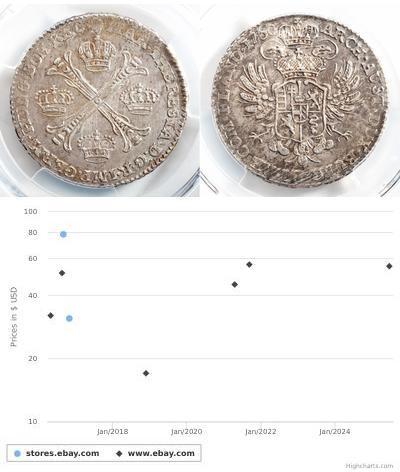100 Franc French Fifth Republic (1958 - ) Silver
1966, New Hebrides. Proof Silver Pattern 100 Francs Coin
Mint Year: 1966
Reference: KM-E1.
Mintage: 3,000 pcs.
Denomination: 100 Francs
Material: Silver (.835)
Diameter: 37mm
Weight: 25gm
 New Hebrides, officially the New Hebrides Condominium (French: Condominium des Nouvelles-Hébrides, lit. “Condominium of the New Hebrides”) and named for the Hebrides Scottish archipelago, was the colonial name for the island group in the South Pacific Ocean that is now Vanuatu. Native people had inhabited the islands for three thousand years before the first Europeans arrived in 1606 from a Spanish expedition led by Pedro Fernandes de Queirós. The islands were colonised by both the British and French in the 18th century, shortly after Captain James Cook visited.
New Hebrides, officially the New Hebrides Condominium (French: Condominium des Nouvelles-Hébrides, lit. “Condominium of the New Hebrides”) and named for the Hebrides Scottish archipelago, was the colonial name for the island group in the South Pacific Ocean that is now Vanuatu. Native people had inhabited the islands for three thousand years before the first Europeans arrived in 1606 from a Spanish expedition led by Pedro Fernandes de Queirós. The islands were colonised by both the British and French in the 18th century, shortly after Captain James Cook visited.
The two countries eventually signed an agreement making the islands an Anglo-French condominium that divided the New Hebrides into two separate communities: one Anglophone and one Francophone. This divide continues even after independence, with schools teaching in either one language or the other, and with different political parties. The condominium lasted from 1906 until 1980, when the New Hebrides gained their independence as the Republic of Vanuatu.
(1737 X 864 pixels, file size: ~251K)
Posted by: anonymous 2023-10-29
1966, New Hebrides. Proof Silver Pattern 100 Francs Coin. NGC PF-64 Ultra Cameo! Mint Year: 1966Reference: KM-E1.Mintage: 3,000 pcs. Denomination: 100 FrancsCondition: Certified and graded by NGC as PF-64 Ultra Cameo! Material: Silver (.835) Diameter: 37mm Weight: 25gm New He ...
(1537 X 746 pixels, file size: ~211K)
Posted by: anonymous 2018-08-31
1966, New Hebrides (French/British Condominium). Silver 100 Francs Coin. AU++ Mint Year: 1966 Reference: KM-1. Mintage: 200,000 pcs. Denomination: 100 Francs Condition: Minor bag-marks, otherwise a nice AU-UNC! Material: Silver (.835) Weight: 24.94gm Diameter: 37mm ...

-500-250-HvBRHAVRBsYAAAFlJmJ88I6S.jpg)
-300-150-s0qBwfuWpxkAAAGLaURrgH2G.jpg)
-300-150-HvBRHAVRBsYAAAFlJmJ88I6S.jpg)













